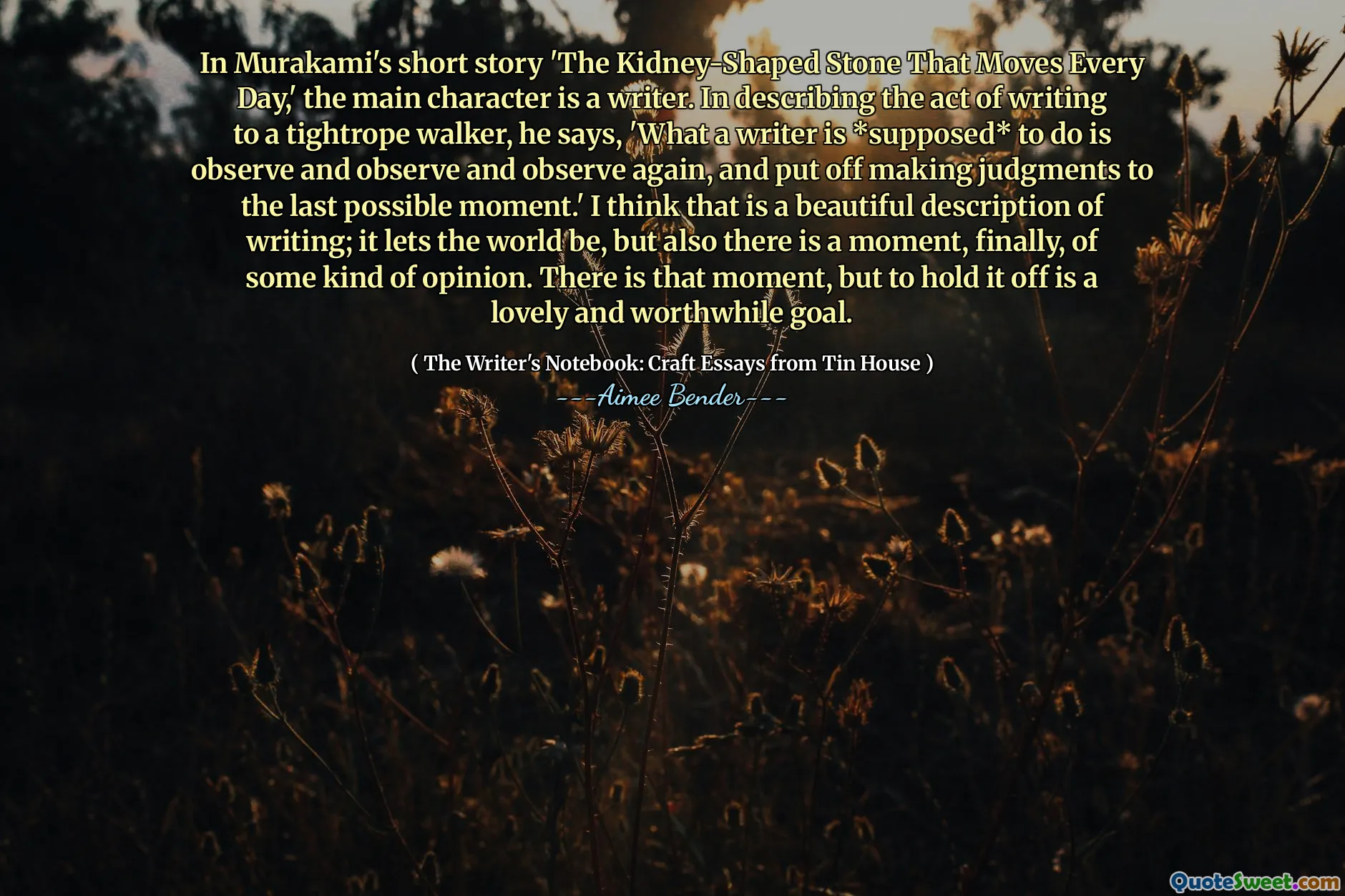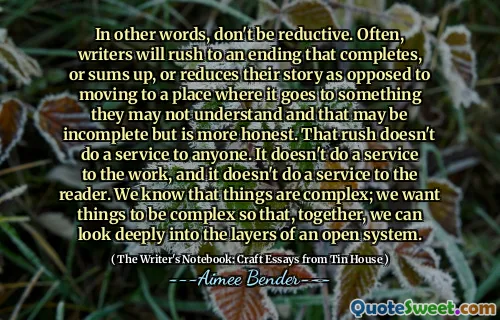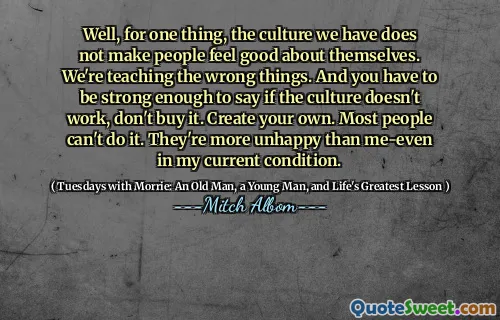
在村上的短篇小说《每天移动的肾脏形石头》中,主角是作家。他说,在描述写信给绳索沃克的行为时,“作家 *应该做的 *要做什么是观察,观察和再次观察,并推迟对最后可能的时刻做出判断。”我认为这是对写作的美丽描述。它使世界成为,但最后还有某种观点的时刻。有那一刻,但是拒之门外是一个可爱而值得的目标。
(In Murakami's short story 'The Kidney-Shaped Stone That Moves Every Day,' the main character is a writer. In describing the act of writing to a tightrope walker, he says, 'What a writer is *supposed* to do is observe and observe and observe again, and put off making judgments to the last possible moment.' I think that is a beautiful description of writing; it lets the world be, but also there is a moment, finally, of some kind of opinion. There is that moment, but to hold it off is a lovely and worthwhile goal.)
主角,作家,穆拉卡米的短篇小说《每天都在移动的肾脏形石头》中,进行了关于与钢管沃克写作本质的对话。他强调了观察在写作过程中的重要性,这表明作家应将其判断力推迟到最后一刻。这种方法反映了对世界的深刻欣赏,就像实现个人观点或解释之前一样。
艾米·本德(Aimee Bender)在她的书《锡豪斯(Tin House)的作家的笔记本:手工艺论文》(The The House)中,在这篇文字描述中找到了美。她认为,观察而不必急于结论的实践促进了对周围环境的更丰富的理解。尽管最终必须发表意见,但价值在于整个观察过程中保持的耐心和开放性。







